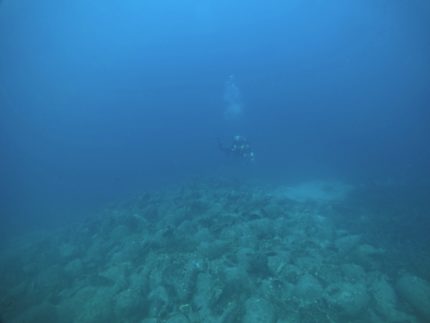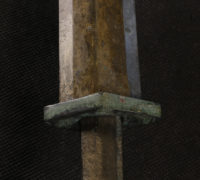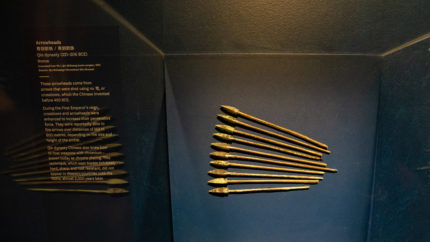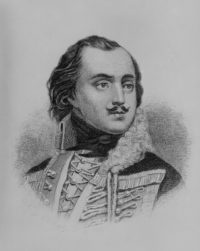 A recent investigation into the remains of Revolutionary War hero and Father of the American Cavalry Casimir Pulaski strongly indicates that he was female or intersex.
A recent investigation into the remains of Revolutionary War hero and Father of the American Cavalry Casimir Pulaski strongly indicates that he was female or intersex.
Born to a noble family is Mazovia, Poland, in 1748, by the time he was in his early 20s, he was a fierce fighter, a Polish patriot in the struggle against Russian expansionism. His military skills and courage were widely recognized in Europe as Poland hurtled towards the First Partition in 1772. When his small army of patriots were defeated and Poland was dismembered by Russia, Austria and Prussia, Pulaski was forced into exile for attempting to assassinate Russia’s puppet king of Poland Stanislaw II Augustus, eventually making his way to America where he took on the cause of Independence with great fervor.
Recommended to George Washington by Benjamin Franklin, Pulaski proved himself in the field at the Battle of Brandywine on September 11, 1777, forestalling the British advance and very likely saving George Washington’s life by giving him the chance to escape. Two days later he created Brigadier General of the Cavalry. Within six months he requested and was authorized to raise an independent cavalry corps. It was a successful combat unit, characterized by Pulaski’s hit hard and run tactics. He was shot and fatally wounded at the Battle of Savannah on October 9th, 1779. He died two days later.
King Stanislaw said when he heard the news “Pulaski has died as he lived, a hero, but an enemy of Kings.” A statement he probably meant as a burn but Pulaski would absolutely have taken as a compliment, especially from a weak faux monarch like that.
Several stories whirled around about what happened to his remains. One of the more widely circulated stories was that he’d been loaded onto a cargo ship, the Wasp, bound for Charleston but when he died, the crew threw him overboard because the stench of his gangrene was so oppressive. It’s not the most likely fate for a cavalry brigadier general, especially since the sea voyage from Savannah to Charleston was so short so really there was no urgent need to dump him overboard like a sack of rotten potatoes. God knows what kinds of smells those sailors were used to. Another story was that he’d been buried at a plantation in Greenwich, just outside of Savannah.
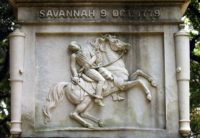 After decades of discussion and funding struggles, the city of Savannah erected a monument to the noble cavalryman. The Pulaski Monument was inaugurated in a ceremony on January 8th, 1855. Colonel William P. Bowen, grandson of the owners of the plantation where family lore said Pulaski had been buried, summarized the evidence that the monument would also be the burial place of Pulaski’s remains. According to Bowen’s aunt, a 14-year-old girl at the time of Pulaski’s death, and the plantation’s groundskeeper, Pulaski’s body was transported to his grandparents’ estate in Greenwich and buried next to a palmetto tree and a glossy holly bush. When the monument was built, Bowen had the spot excavated and there was indeed a body buried there. The bones were closed in a metal box which was placed inside the monument.
After decades of discussion and funding struggles, the city of Savannah erected a monument to the noble cavalryman. The Pulaski Monument was inaugurated in a ceremony on January 8th, 1855. Colonel William P. Bowen, grandson of the owners of the plantation where family lore said Pulaski had been buried, summarized the evidence that the monument would also be the burial place of Pulaski’s remains. According to Bowen’s aunt, a 14-year-old girl at the time of Pulaski’s death, and the plantation’s groundskeeper, Pulaski’s body was transported to his grandparents’ estate in Greenwich and buried next to a palmetto tree and a glossy holly bush. When the monument was built, Bowen had the spot excavated and there was indeed a body buried there. The bones were closed in a metal box which was placed inside the monument.
In the 1990s, the monument’s structure was failing and had to be dismantled and reconstructed. When the monument was opened, they found a metal container, heavily corroded by rainwater. It was filled with neatly stacked bones, skull on top. The bones were examined in the State crime lab by forensic specialist Karen Burns. She found that the pelvis was female with the characteristic oval shape. So it seemed these were not the bones of Cazimir Pulaski after all.
Or were they? Burns considered the possibility that Pulaski may have had congenital adrenal hyperplasia, ie, was genetically female with ovaries and uterus but due to high testosterone levels had masculine external sex characteristics. Portraits indicated he had a receding hairline and thin moustache. He was of slight build, a few inches above five feet tall, had never married nor had any children. He was something of a lone wolf, both in his private life and as a military leader. He didn’t womanize, didn’t drink, didn’t fraternize with his comrades. A non-standard body type could have been a factor in this aspect of his personality. It’s not out of the realm of the possible that the Father of the Cavalry might have been intersex without him or anyone else realizing it.
Baptismal record indicates he was baptized at home due to what is described as a debilitatus. The baby was otherwise healthy and there is no evidence that Cazimir suffered any illness in his youth. The reference to a “debility” and the private baptism could reasonably have been a reaction to atypical sex characteristics. Whatever the circumstances attending his baptism, he was raised as a boy, was trained in cavalry combat as any young nobleman of his time was and excelled at it, besting both of his brothers.
A 10-year investigation of the bones, including an attempted comparison of mitochondrial DNA in the bones from the Pulaski Monument and bone fragments recovered from the grave of Pulaski’s grandniece Teresa Witkowska. The original investigation was unable to retrievable viable samples of mitochondrial DNA from those fragments.
Most of the remains were reburied in 2005 in a crypt next to the restored monument, but castsof the original bones and a few of the real ones were kept for future study. The investigation picked up steam again recently.
New tests on the same bones sampled the first time did retrieve mtDNA, but the comparison between a tooth from the Pulaski Monument bones and a femur from the Witkowska remains did not return a match. Those samples had been cut into, however, making them susceptible to contamination, so the team tried again with two different bone samples from the monument (a tallus bone) and Pulaski’s grandniece (a metatarsal). The mtDNA connection excludes 99% of the population, so that means the bones are either Cazimir Pulaski’s or there was some other random Pulaski relative buried in Savannah at the same time, which is so extremely unlikely it can be dismissed.
“One of the ways that male and female skeletons are different is the pelvis,” Virginia Hutton Estabrook, an assistant professor of anthropology at Georgia Southern University, told NBC News. “In females, the pelvic cavity has a more oval shape. It’s less heart-shaped than in the male pelvis. Pulaski’s looked very female.”
While the Pulaski skeleton showed tell-tale signs of extensive horseback riding and a battle wound on the right hand that the general is known to have suffered, the facial structure and jaw angle were decidedly female, Estabrook said.[…]
Was Pulaski aware of being different from the men around him?
“Probably he was not completely aware,” Estabrook said. “What we do know about Pulaski is that there were enough androgens (male hormones) happening in the body, so that he had facial hair and male pattern baldness. Obviously, there was some genital development because we have his baptismal records and he was baptized as a son.” […]
Told of the revelations about Pulaski, Richard Zawisny, president of the annual Pulaski Day parade, admitted, “I’d heard something about this before, but I’m a little shocked by this.”
“But in this day and age, I don’t think it will matter to most people,” he said. “I really believe that the majority won’t care, and it doesn’t take away from the fact that Pulaski was a Polish-American hero.”
The study of Casimir Pulaski’s skeletal remains is the subject of an episode of America’s Hidden Stories that premiered on the Smithsonian Channel Monday, April 8th, at 8:00 PM. It’s fascinating.
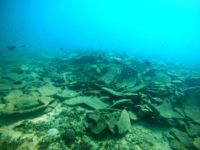 For decades the prospect of looters and even well-meaning recreational divers damaging Greece’s vast underwater cultural patrimony made SCUBA diving illegal in Greek waters. Since 2005 diving has been allowed but only in very restricted circumstances, mainly to archaeological teams excavating ancient shipwreck sites. A new initiative under the BLUEMED program will now open ancient shipwrecks to the public who will be able to explore the sites via guided diving.
For decades the prospect of looters and even well-meaning recreational divers damaging Greece’s vast underwater cultural patrimony made SCUBA diving illegal in Greek waters. Since 2005 diving has been allowed but only in very restricted circumstances, mainly to archaeological teams excavating ancient shipwreck sites. A new initiative under the BLUEMED program will now open ancient shipwrecks to the public who will be able to explore the sites via guided diving.Thousands of ancient vases, the vast majority intact, lie in layers. Fish, sponges and other sea creatures have made the amphoras their home, adding color and life to the site. In some places, the cargo towers above divers as they pass along the perimeter of the wreck.
